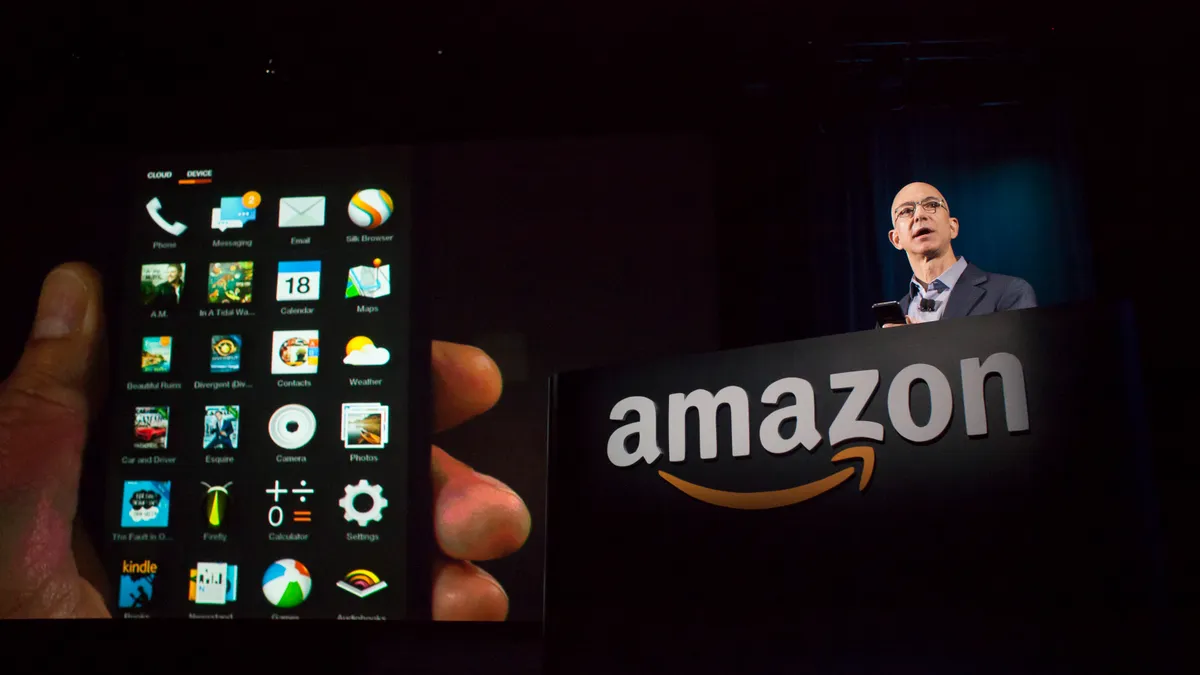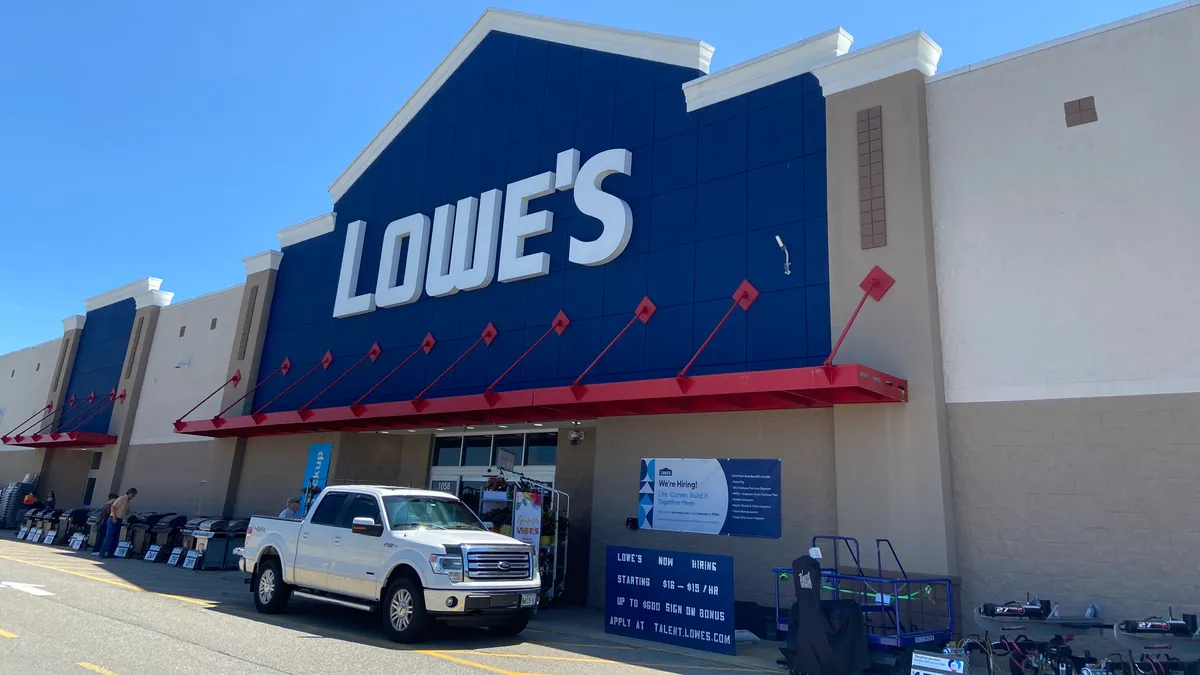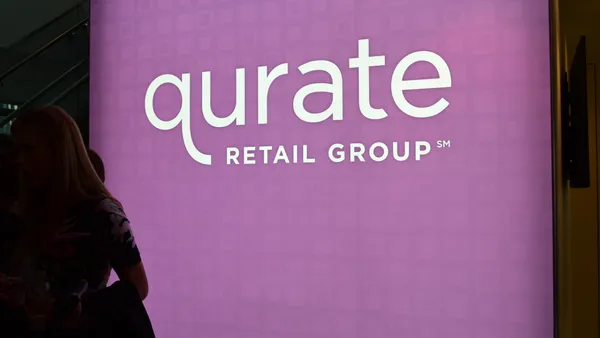No brand in retail generates more questions, opinions and fascination than Amazon. So each year the Internet Retailer Conference + Exposition hosts Amazon & Me, a day-long pre-conference workshop designed for retailers and branded manufacturers alike.
Described by moderator/organizer Scot Wingo as “a curated mix of Amazon strategies and tactics that both beginners and advanced as well as retailers and brands can utilize,” Amazon & Me 2016, held earlier this week, drilled deep into the Amazon mystique in an effort to better understand the company’s business model, its core philosophies and its ultimate goals. Here are five major takeaways from this year’s event.
1. Amazon may be even bigger than many realize
Amazon towers over the e-commerce landscape: It’s by far the largest online retailer, posting $107 billion in revenue in 2015. According to Wingo, the co-founder and executive chairman of e-commerce solutions provider ChannelAdvisor, Amazon’s revenues are growing 26% year over year, and it now serves 310 million active buyers, a customer segment increasing 13% annually. Electronics and general merchandise account for 80% of Amazon product sales, Wingo estimates; media (books, movies, records, etc.) make up 9%, while other items represent the remaining 11%.
“Amazon’s really two businesses, like a Reese’s Peanut Butter Cup with both chocolate and peanut butter,” Wingo said, explaining that brand owners who choose to sell on the platform may select between its 1P business (selling first-party, wholesale, directly to Amazon via the Vendor Central interface) or its 3P business (selling third-party to consumers through the Amazon Marketplace via the Seller Central interface). Overall, Marketplace generates 9-12% of Amazon's total annual revenue, according to analyst projections.
“Amazon already built the store and they already have the customers. That 9% share is pure profit, because all the expenses of this business are borne by the first-party side,” Wingo said. “I don’t think Amazon is a $100 billion retailer. It’s actually a $200 billion retailer. 1P and 3P grossed up equals $200 billion. That’s why I believe [Amazon’s] going to be larger than Wal-Mart’s non-grocery business by the end of this year.”
What’s more, Wingo believes Amazon’s 3P business is growing north of 45% annually, compared to 1P, which is increasing 20% each year. “Amazon is soaking up so much product out of the ecosystem, and most people don’t really realize it,” he said. “It’s amazing.”
2. Data is the key to survival on Amazon Marketplace
Accurate, relevant data offers Amazon sellers a significant competitive advantage, improvement in efficiencies and insights into customer demand for products, said Alison Held, ChannelAdvisor’s product manager for marketplaces.
Held maintains that Amazon Marketplace sellers should follow a handful of fundamental tenets. They should restock merchandise based on popularity trends (i.e., Amazon’s bestseller lists), make price or program decisions based on traffic and conversion numbers, and leverage past sales data to anticipate future performance.
“Look at your expected sales year over year, but also consider recent timeframes as well,” Held said. “You want to make sure you’re evaluating the market landscape to calculate demand most accurately.” Additional factors to consider: Seasonality, business growth, inbound lead time and the item’s lifecycle.
Amazon sellers should also carefully analyze the competitive landscape. “Amazon is a crowded space. 3P is growing at an incredible rate,” Held said. “The first question to consider: How many sellers are on my listing, or selling similar products? What is the lowest-price offer? Are there FBA [Fulfilled by Amazon] sellers on the listing? Do you have the Buy Box? Is Amazon on the listing? You need to assess trends in the market to understand why something is performing well, or less than expected.”
The FBA program is particularly vexing for many Marketplace sellers because competition is so fierce. In response to the enormous growth of the Amazon Prime shipping program, FBA is booming as sellers move to exploit the program’s shipping benefits: According to Held, there were 50% more sellers using the FBA program in 2015 than a year earlier.
“Faster shipping is becoming an expectation in this space,” Held said. “As a seller, you have to be smarter about the demand for your item—you’re competing for shelf space in Amazon’s warehouses. Be intentional about product selection.”
And if you can’t compete, pivot your strategy, or at least revamp your pricing model. “Pricing on Amazon is not one-size-fits-all,” Held said.
3. Amazon seller reputation is everything
Days prior to IRCE 2016, Amazon took an unprecedented step in its efforts to purge fake reviews from its site, suing three sellers for using false accounts to post positive customer reviews about their products—the first time the company has sued sellers on its marketplace.
Amazon & Me speakers did not seem surprised by the move. “That library of reviews is one of Amazon’s most valuable assets, and they’re going to protect it,” said Joseph Jaconi, co-founder and general manager at device screen protector seller Tech Armor. “You cannot use paid review services. Don’t solicit reviews from friends and family. Don’t offer things for free in exchange for good reviews.”
Legitimate customers reviews are the lifeblood of Amazon Marketplace sales, experts say. “Why is feedback so important? Because your reputation is all you have,” said David Rifkin, president and CEO of cleaning supplies retailer MicroFiber Products Online. “You’ve got to do the right thing always.”
Tech Armor sales have translated to about 60,000 Amazon reviews, Jaconi said, with an average rating of 4.5 stars out of 5. While Amazon automatically solicits seller feedback and product reviews following a purchase, there are legitimate tactics sellers can explore to generate additional reviews. Rifkin notes that sellers can manually target customers by drilling into orders and requesting feedback; there are also authorized third-party solutions that contact customers for honest, objective comments.
“How do you get more reviews? We ask for them,” Jaconi said. “There’s nothing wrong with asking a customer who’s purchased your product for a review.”
Sellers can improve the quality of reviews by taking steps to make sure their product specifications and other details are correct, says Eric Heller, founder and CEO of e-commerce consulting firm Marketplace Ignition.
“The biggest problem hurting Amazon seller reputations is misunderstandings about what a product does or how to use it,” Heller said. He suggests sellers “overspend on getting your content and imagery correct,” as well as consider investing in reputation management software and other tools.
Positive reviews drive additional purchases, of course, but Rifkin notes that Marketplace sellers can also leverage them as collateral to help build partnerships with product manufacturers.
“There are so many people trying to get on Amazon to sell, and only so many brands. The rejection level is getting quite high,” Rifkin said. “But if you have the best reputation on Amazon, and you can present that to a company and give them confidence that you’ll present their product in the best light, it opens doors.”
4. B2B, AI and IoT will shape Amazon’s future
Office supplies retailer Staples attempted to salvage its doomed $6.3 billion merger with rival Office Depot by demonstrating to skeptical regulators that Amazon represents major competition in the business contracts space. The U.S. District Judge hearing the case did not agree, siding with the Federal Trade Commission. But it appears that Amazon is poised to become a major player in the business-to-business segment after all.
In an IRCE pre-conference session separate from the Amazon & Me workshop, Forrester Research principal analyst Andy Hoar predicted that the B2B e-commerce market as a whole will swell to $1.13 trillion by 2020, more than twice the size of online B2C. Hoar anticipates B2B e-commerce will grow still larger in the decade ahead, representing 25% of all U.S. B2B transactions in 2025 and as much as 40% by 2030.
“With B2C, consumers still want to try things on and go to a physical store. That creates a barrier to online growth,” Hoar said. “With B2B e-commerce, the sky’s the limit.”
Forrester data indicates that 63% of B2B buyers already research half or more of their work purchases online, and 53% say they will make half or more of their purchases online by 2018, Hoar added. And that’s where Amazon comes in: 92% of B2B buyers told Forrester they’ve used Amazon to research a purchase for work, and 82% of B2B buyers have used Amazon to buy for work. “Amazon has become the de facto product search engine,” Hoar said.
Artificial intelligence is another key component of Amazon's future. Founder and CEO Jeff Bezos recently threw his support behind artificial intelligence, announcing, "It's hard to overstate how big of an impact it's going to have on society over the next 20 years.”
Speaking with Prentis Wilson, vice president of the Amazon Business unit, Hoar expressed his own enthusiasm for the role Amazon’s AI-based Alexa voice assistant platform may play in driving B2B innovation, outlining a scenario whereby a mechanic working on a car repair could ask Alexa to order a new auto part simply by using voice commands, without ever wheeling himself out from underneath the vehicle.
Hoar also trumpeted Amazon’s WiFi-enabled Dash product reorder buttons. “There’s a real opportunity to improve convenience for customers,” Wilson agreed. “Dash is one example. The real interesting technology there is the replenishment service. It builds confidence, because you know the right item is being ordered.”
Piper Jaffray Senior Research Analyst Gene Munster told the Amazon & Me audience he’s particularly high on Dash’s potential. “[It’s] the next step in commerce,” he proclaimed. “Dash will allow consumers to focus less on buying things you don’t really get excited to buy. That ability to free us from thinking about those things is something Amazon is trying to do.”
Munster envisions the core Dash technology expanding far beyond Amazon’s buttons and existing integrations (e.g., water filters, printers and soap dispensers), stating it will ultimately power a range of Internet of Things products including smart lighting, water softeners and refrigerators—even connected paper towel and toilet paper dispensers that track usage and automatically place new orders as supplies run low.
“It’s automated consumption,” Munster said. “I’m super-excited about this.”
5. Amazon works in mysterious ways—and it will never reveal all its secrets
Even Amazon’s most ardent admirers find the retailer perplexing. “Amazon is the world’s most secretive company,” ChannelAdvisor’s Wingo said during his introductory remarks. “Jeff Bezos is a big believer in game theory, which argues that it doesn’t make sense to share anything going on.”
Analysts, pundits and vendor partners end up guessing at many of Amazon’s moves and motivations. Even some Amazon staffers are in the dark—a vital tactic for driving innovation and creative problem solving, suggests Marketplace Ignition’s Heller. “Most teams [inside Amazon] have no idea what another is doing,” he said. “Amazon is intentional about internal conflict. They love to challenge internally, and it’s all for the consumer.”
Munster admits he’s unable to understand how certain pieces of the Amazon puzzle fall into place. “Amazon Studios… I don’t get it,” he said. “They want great, compelling content, and they’re spending a lot on it. That’s their stated goal: ‘Prime video sells shoes.’”
Another enigma: Amazon’s brick-and-mortar bookstores. “I don’t know what they’re doing with a bookstore,” Munster shrugged. “Bezos said they’re reinventing the browsing experience. I struggle with how it fits into the bigger picture.”
But Munster—along with seemingly every other Amazon & Me speaker who’s tied their future to the Amazon platform—believes Bezos knows precisely what he’s doing... even if no one else is privy to his logic.
“This company is run by somebody who has aspirations of going to Mars. It’s not a PR thing. [Bezos] really wants to do that,” Munster said. “Someone who is that intense, and that much of a big-picture thinker, is going to stick to selection and price and delivery, but is also going to do some radical things to make sure [Amazon’s] moving in the right direction.”





















